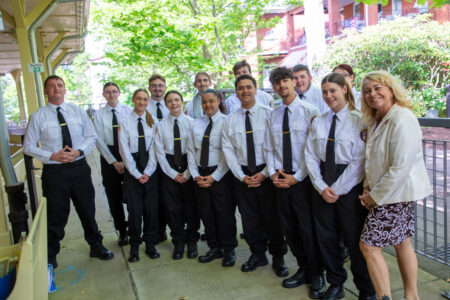Fluorescence Imaging Assisting Surgeons With Robotic Surgery

The Firefly da Vinci Si Surgical System with integrated fluorescence imaging capability provides real-time, image-guided identification of key anatomical landmarks using near-infrared technology. Fluorescence imaging allows surgeons to see and assess anatomy better than the naked eye. Submitted photo
Indocyanine green water-soluble, tricarbocyanine dye is the newest weapon for robotic surgeons to use at UPMC Chautauqua WCA to improve the ease and efficiency of surgery.
Hospital staff started using the new Firefly da Vinci Si Surgical System with integrated fluorescence imaging capabilities in December. In just a few months, Dr. Timothy Brown, board certified surgeon, said the Firefly system has dramatically increased the ease and efficiency of robotic surgery for gallbladder, tissue perfusion and kidney surgeries.
He said the Firefly system provides real-time, image-guided identification of key anatomical landmarks using near-infrared technology, which uses fluorescence imaging to allow surgeons to see and assess anatomy better than just using the naked eye to further enhance vision, precision and control of minimally invasive da Vinci robotic surgery.
”There is more accurate identification when you need it,” he said. ”It gives you a second set of eyes.”
For example, Brown said during gallbladder surgery, the indocyanine green water-soluble, tricarbocyanine dye will glow brighter in the liver and less in the gallbladder, which is determined by the amount of bile in each organ.
Another example during kidney surgery when removing a tumor, the kidney will glow bright green while the tumor will be dark. This allows the surgeon to know exactly where to start making their incision when removing the tumor from the kidney.
Brown said they use the Firefly system between 10-20 times per month. He said the cost of the system was $125,000 for two cameras, software and electronics. He said for each patient, the additional cost for the hospital is only $8 for the indocyanine green water-soluble, tricarbocyanine dye.
”There is almost no downside,” he said.
The hospital started performing robotic surgery four years ago, with the hospital’s robotic surgery anniversary being St. Valentines Day. Brown said they have performed more than 1,000 robotic surgeries. For more information on robotic surgery, Dr. Thomas Andrews, UPMC Chautauqua WCA credentialed robotic surgeon, will host a community presentation at 6 p.m. Thursday, April 13, in the hospital’s auditorium, located at 207 Foote Ave. The title of the presentation is ”Learn How Robotic Surgery Provides Patient Benefits for Endometriosis and Hysterectomy.”






